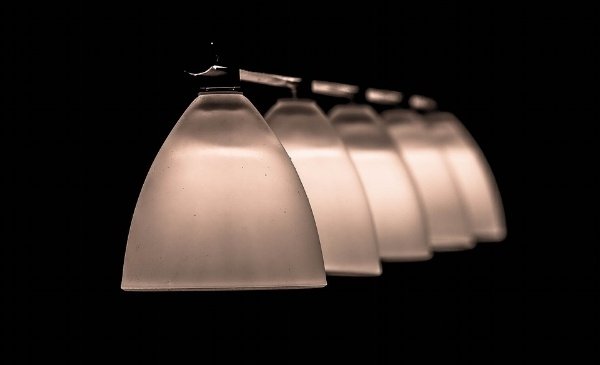Types Of Lighting
If you're planning some remodeling or simply planning new lighting for your home, you’ll want to become familiar with the terminology and techniques used to give your home better lighting. This knowledge will help you plan appropriate lighting for each room in your house based on your needs and lifestyle.
The three basic types of lighting are ambient, task and accent lighting. Each of these has a specific lighting purpose.
Ambient lighting is the overhead light, the one you turn on to see the whole room. Chatsworth House by Glitzy queen00 at English Wikipedia
Ambient lighting is general lighting. When you walk into a room and flip the light switch, the overhead light is the ambient lighting. The purpose of ambient light is so you can see the whole room. Ambient lighting can be a flush mount, a chandelier, recessed lighting, or a fan/light combination.
Task lighting works well in desk areas and at counters where being able to see well is crucial.
Task lighting is lighting which helps you do tasks. In the kitchen, it’s the lights about the sink and counters. It’s the reading lamps in your living room and bedroom, and the lights around your bathroom mirror.
Accent lighting is the lighting designed to showcase an individual item or a collection. These are the lights that show off your paintings. Silhouette lighting or track lighting are also options for accent lighting, which is designed to showcase what you want people to see. Sometimes, accent lighting which isn’t as bright has a bigger impact than bright accent lighting, which can sometimes seem like a glaring spotlight.
The LED lighting at the bottom of the cabinets is accent lighting, dramatic, and works well here.
Layering your lighting will bring out the best in a room.
Layers start with the ambient light since it’s usually the lighting which is in the room by necessity, and work from there. If the occupants perform tasks in certain areas of the room, task lighting is appropriate. Accent lighting will highlight artwork or the best features of the decor or architecture.
Don’t forget the non-room lighting.
Closets, hallways, pantries, and stairs are always excellent places to put lights. They are often overlooked. The problem with this is that it doesn’t address the need for lighting in those areas. No one is going to be happy trying to find something in a dark closet. A single, swinging bulb is almost as unpleasant an option as total darkness.
Hallways are a fantastic place to put recessed lighting. It’s a shame to have a sleek hallway with a single, outdated wall sconce. Stairways benefit from lighting because they can be accented beautifully with LED strip lighting on a motion detector. No, the dog won’t play with it all night, we promise.
Remember, lights convey mood, so the mood of the room will change when different sets of lights are turned off and on. Rooms should have at least two of the various types of lighting or two separate examples of one type of lighting.
Last of all, don’t forget that your outdoor lighting should be arranged in much the same fashion, with multiple forms of lighting to provide safety, security, illumination, and ambiance.
RSB Electrical offers electrical appliance wiring, porch light installation, chandelier installation, and smoke detector installation services in Mesa, AZ. We also specialize in outdoor lighting installation, electrical retrofitting, and new home wiring. Call 480-485-4284 for more information.




